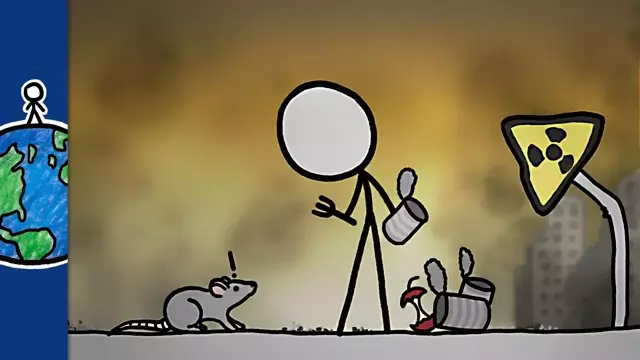2018-03-22
[public] 713K views, 13.8K likes, dislikes audio only
Go to https://brilliant.org/MinuteEarth to build your math & science skills!
Food already in cupboards, supermarkets, & warehouses could feed humanity for 4 months, but potential food - berries, termites & krill - could extend that by another year.
Thanks also to our Patreon patrons https://www.patreon.com/MinuteEarth and our YouTube sponsors.
___________________________________________
To learn more, start your googling with these keywords:
Food stock: the total amount of any particular food existing at any point in time
Strategic reserve: food intentionally kept on reserve to be sold when supplies otherwise become low
Stock to use ratio: the amount of stock of any given food at any point in time as a fraction of the total annual consumption of the commodity
___________________________________________
If you liked this week’s video, you might also like:
https://fpaq.ca/en/federation/marketing/marketing-tools/strategic-reserve/ https://www.nationalgeographic.com/what-the-world-eats/
_________________________________________
Subscribe to MinuteEarth on YouTube: http://goo.gl/EpIDGd
Support us on Patreon: https://goo.gl/ZVgLQZ
And visit our website: https://www.minuteearth.com/
Say hello on Facebook: http://goo.gl/FpAvo6
And Twitter: http://goo.gl/Y1aWVC
And download our videos on itunes: https://goo.gl/sfwS6n
___________________________________________
Credits (and Twitter handles):
Script Writer: Peter Reich
Script Editor: Alex Reich (@alexhreich)
Video Illustrator: Jessika Raisor
Video Director: Emily Elert (@eelert)
Video Narrator: Emily Elert (@eelert)
With Contributions From: Henry Reich, Kate Yoshida, Ever Salazar, David Goldenberg
Music by: Nathaniel Schroeder: http://www.soundcloud.com/drschroeder
___________________________________________
References:
Atkinson, A., Siegel, V., et al. 2009. A re-appraisal of the total biomass and annual production of Antarctic krill. Deep Sea Research Part I: Oceanographic Research Papers. Volume 56, Issue 5, 727-740
FAO. World Food Situation http://www.fao.org/worldfoodsituation/csdb/en/
FAO. World Cassava Situation and Recent Trends http://www.fao.org/docrep/009/x4007e/X4007E04.htm
Kaspari, M., Weiser, M.D. 2012. Energy, taxonomic aggregation, and the geography
of ant abundance. Ecography 35:65-72.
National Geographic https://www.nationalgeographic.com/what-the-world-eats/
National Geographic https://www.nationalgeographic.com/what-the-world-eats/
Penn State University Extension. Oil factsheet: oilseed presses. 7pp (undated).
Ritchie, H., Roser, M. 2018. "Meat and Seafood Production & Consumption". Published online at OurWorldInData.org. Retrieved from: 'https://ourworldindata.org/meat-and-seafood-production-consumption'
Sanderson, MG. 1996. Biomass of termites and their emissions of methane and carbon dioxide: A global database. Global Biogeochemical Cycles 10, 543-557.
Statista https://www.statista.com/statistics/251728/weekly-number-of-us-grocery-shopping-trips-per-household/
USDA ISSN: 1554-9089, World Agricultural Supply and Demand Estimates, February 8, 2018;
https://www.usda.gov/oce/commodity/wasde/latest.pdf (latest monthly update)
Wilson, RW. et al. 2009, Contribution of Fish to the Marine Inorganic Carbon Cycle, Science 323, 359-362
https://fpaq.ca/en/federation/marketing/marketing-tools/strategic-reserve/
/youtube/video/qCDi7Lwtsno
/youtube/video/DjjBg8hTaPo?t=10
/youtube/video/DjjBg8hTaPo?t=32
/youtube/video/DjjBg8hTaPo?t=66
/youtube/video/DjjBg8hTaPo?t=88
/youtube/channel/UCeiYXex_fwgYDonaTcSIk6w
https://www.patreon.com/minuteearth
/youtube/video/4DF94Wvtekk

